Progressive vs interlaced video encoding is a highly discussed topic among the streaming businesses. In the fast-paced streaming industry, the battle between Progressive Video Encoding and Interlaced Video Encoding rages on, shaping the landscape of streaming content delivery.
As streaming businesses strive to provide viewers with immersive and high-quality experiences, understanding the nuances of these encoding methods becomes paramount.
The choice between the fluidity of progressive scans and the historical legacy of interlaced formats can significantly impact the visual integrity and compatibility of streamed content. It’s a tale of modern innovation versus traditional legacy, each with its merits and considerations.
In this dynamic quest for superior streaming quality, the right choice can spell the difference between captivating audiences or leaving them disconnected.
Let’s delve deeper into these encoding techniques and unveil the key elements that drive streaming businesses toward the future of visual excellence.
The Importance of Video Encoding in Streaming Business
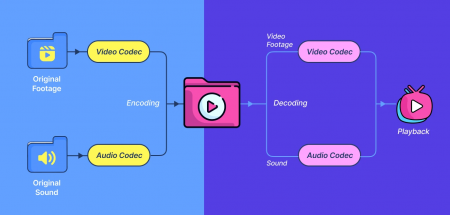
In the rapidly evolving landscape of digital media consumption, video streaming has emerged as a dominant force, reshaping how content is delivered and consumed.
At the heart of this transformation lies the crucial process of video encoding. Video encoding, the method of converting raw video data into a compressed format suitable for transmission and playback, plays a pivotal role in the streaming business.
Let’s discuss the significance of video encoding and how it impacts the streaming industry.
1. Optimized Bandwidth Utilization
Efficient video encoding is paramount for delivering high-quality content without straining bandwidth. With the surge in streaming platforms and the ever-increasing demand for high-definition (HD) and ultra-high-definition (UHD) content, bandwidth optimization becomes crucial.
Video encoding employs advanced compression algorithms to reduce the file size while retaining visual fidelity. This optimization ensures smoother playback, minimizes buffering, and enhances the viewer’s experience.
2. Enhanced Viewing Experience
Video encoding significantly contributes to the viewer’s experience. By balancing compression and quality, encoding transforms raw video files into formats that can be seamlessly transmitted across different devices and network speeds.
The use of adaptive bitrate streaming, a technique enabled by effective encoding, adjusts the video quality in real-time based on the viewer’s internet connection. This ensures uninterrupted playback, even under varying network conditions, ultimately enhancing user satisfaction.
3. Cross-Device Compatibility
In an era of diverse devices, from smartphones and tablets to smart TVs and gaming consoles, ensuring compatibility across platforms is essential. Video encoding allows streaming businesses to offer content in a range of formats suitable for different devices and screen sizes.
From adaptive streaming to multiple bitrates, encoding ensures that users can enjoy a consistent viewing experience regardless of the device they choose.
4. Content Protection and Security
Video encoding also plays a pivotal role in content protection and security. Digital Rights Management (DRM) technologies are often integrated during the encoding process to prevent unauthorized distribution and piracy.
Advanced encoding techniques, such as watermarking and encryption, provide layers of protection that safeguard intellectual property and prevent unauthorized access to the content, a critical concern for streaming businesses.
5. Scalability and Cost-Efficiency
For streaming businesses aiming to cater to a global audience, scalability is essential. Effective video encoding facilitates seamless scalability by optimizing data transmission and storage. By minimizing file sizes, businesses can reduce storage costs and efficiently transmit content to a larger audience.
This scalability not only accommodates viewership spikes but also promotes cost-efficiency as businesses expand their operations.
What Is Progressive Video Encoding?
Progressive video encoding is a method used in digital media compression and transmission, where a video is encoded and transmitted in a way that allows for the gradual rendering of the image.
Unlike interlaced encoding, where an image is transmitted as alternating fields of odd and even lines, progressive encoding presents the entire frame in a single pass. This approach ensures that viewers can see a coherent and recognizable image even before the complete video is loaded, offering a smoother and more natural viewing experience.
Progressive video encoding is widely utilized in streaming services, online video platforms, and digital broadcasts, as it enables content to be displayed seamlessly on a variety of devices and network speeds.
This method not only enhances visual quality but also minimizes artifacts and motion issues often associated with interlaced formats. As a fundamental technique in modern video distribution, progressive video encoding plays a pivotal role in delivering content efficiently and effectively to audiences across the digital landscape.
To know more about progressive video encoding and its advantages, read our blog – What is Progressive Video Encoding and What are its advantages?
How Progressive Video Encoding Works?
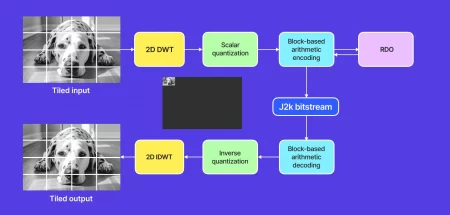
Progressive video encoding is a sophisticated method of compressing and transmitting video content, providing viewers with a seamless and progressively improving visual experience.
Let’s delve walk you through how progressive video encoding works.
1. Image Transformation and Compression
The encoding process begins with the raw video frames captured by cameras or sourced from other media. These frames are then subjected to a series of transformations and compression algorithms to reduce their size while maintaining image quality.
Progressive video encoding primarily utilizes intra-frame compression techniques like H.264/AVC or H.265/HEVC, which analyze individual frames without referencing other frames for compression.
2. Frame-by-Frame Encoding
Unlike interlaced encoding, which divides frames into fields, progressive encoding processes each frame as a complete entity. This approach allows for the efficient compression of individual frames, preserving fine details and textures.
This technique is particularly beneficial for content with fast motion or complex visual elements, ensuring minimal artifacts.
3. Generation of Multiple Bitrates
To cater to varying network conditions and devices, progressive encoding generates multiple versions of the same content at different bitrates. This technique is fundamental to adaptive bitrate streaming, where the streaming server selects the optimal bitrate version based on the viewer’s network speed.
This enables smooth playback and minimizes buffering, enhancing the viewer’s experience.
4. Metadata and Headers
Progressive encoding employs metadata and headers to provide essential information about the encoded video. This includes details about the resolution, frame rate, color space, and compression parameters.
These metadata and headers facilitate seamless playback and decoding on the receiving end.
5. Transmission of Encoded Data
The encoded video data, along with metadata and headers, are transmitted over the network to the viewer’s device. The data is usually sent in small chunks or packets to ensure a continuous stream. This step requires careful optimization to minimize latency and ensure smooth playback.
6. Decoding at the Viewer’s End
Upon receiving the encoded data, the viewer’s device initiates the decoding process. Decoding is the reverse of encoding: it involves unpacking the compressed data, reconstructing frames, and applying decompression algorithms to restore the video to its original quality.
7. Display in a Progressive Manner
As the decoding process progresses, the viewer experiences a gradually improving visual quality. Unlike interlaced encoding, where fields are displayed in an alternating fashion, progressive encoding allows the viewer to see the entire frame in a smooth, incremental manner. This results in a more natural and immersive viewing experience.
8. Adaptive Bitrate Streaming
One of the key strengths of progressive encoding lies in its compatibility with adaptive bitrate streaming. This technique leverages the multiple bitrate versions generated during encoding to adjust the video quality in real-time based on the viewer’s network conditions.
If the network speed drops, the streaming server seamlessly switches to a lower bitrate version, ensuring continuous playback without buffering interruptions.
9. Compatibility with Modern Displays
Progressive video encoding aligns well with modern display technologies like LCDs, OLEDs, and digital projectors, which inherently render complete frames. This compatibility contributes to the superior visual experience offered by progressive-encoded content.
What Is Interlaced Video Encoding?
Interlaced video encoding is a technique employed in digital media compression and transmission, where a video frame is divided into alternating fields of odd and even lines. This method aims to present an image by sequentially displaying these interlaced fields, creating the illusion of a complete frame to the human eye.
Interlaced encoding was developed as a means to conserve bandwidth and enhance the display quality of cathode-ray tube (CRT) displays, which historically exhibited flickering issues. Despite its historical significance, interlaced encoding is becoming less prevalent due to the widespread adoption of modern display technologies, such as liquid crystal displays (LCDs) and organic light-emitting diode (OLED) screens, which do not suffer from the same flickering problems.
How Interlaced Video Encoding Works?
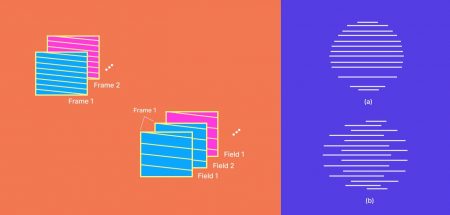
While progressively encoding content has largely taken over in the digital age, understanding the mechanics of interlaced encoding sheds light on the evolution of video technology.
1. Dividing Frames into Fields
In interlaced video encoding, a full video frame is divided into two fields: the odd field and the even field. These fields consist of alternating lines of image data.
The odd field comprises all the odd-numbered lines (1, 3, 5, etc.), while the even field consists of the even-numbered lines (2, 4, 6, etc.). This division was historically designed to mitigate flickering issues that plagued early CRT displays.
2. Sequential Transmission of Fields
Once the frame is divided into fields, the encoding process involves the sequential transmission of these fields. Rather than transmitting the entire frame at once, interlaced encoding transmits the odd field first, followed by the even field.
This transmission pattern ensures that each field is displayed in rapid succession, creating the illusion of a complete frame to the viewer’s eye.
3. Flicker Reduction and Compatibility
One of the primary motivations behind interlaced encoding was to reduce flickering on CRT displays. The rapid display of alternating odd and even fields helped counteract the flicker caused by the continuous refreshing of the screen.
Additionally, interlaced encoding was compatible with the analog technology of the time, allowing for smoother transmission and reception of video signals.
4. Deinterlacing for Display
To render interlaced content on modern displays, a process called deinterlacing is required. Deinterlacing involves reconstructing full frames from the odd and even fields for smooth playback on progressive displays.
Various algorithms and techniques are used to interpolate missing lines and minimize artifacts caused by interlaced encoding. However, deinterlacing can introduce motion artifacts and reduce image quality, especially in fast-moving scenes.
5. Challenges and Limitations
While interlaced encoding served its purpose in the past, it presents several challenges and limitations in today’s digital landscape. Progressive displays, such as LCDs and OLEDs, have become the norm, rendering the interlaced transmission pattern less relevant. Deinterlacing can introduce visual artifacts, impacting image quality.
Moreover, interlaced encoding is less efficient in compressing video data compared to progressive encoding techniques, leading to larger file sizes.
6. Legacy in Modern Content
Despite its diminishing relevance, interlaced encoding has left an imprint on modern content delivery. Older video content originally produced using interlaced technology continues to be distributed in this format.
As a result, modern streaming platforms and broadcasting systems incorporate deinterlacing algorithms to ensure compatibility with progressive displays.
Advantages of Interlaced Video Encoding
Interlaced video encoding, a technique rooted in the historical development of television technology, offers distinct advantages that were particularly relevant during its era.
1. Flicker Reduction on CRT Displays
One of the primary advantages of interlaced video encoding was its effectiveness in mitigating flickering on cathode-ray tube (CRT) displays. In the analog era, CRTs suffered from flicker due to the continuous refreshing of the screen.
Interlaced encoding addressed this issue by rapidly displaying alternating odd and even fields. This pattern reduced flickering by presenting images at a higher effective refresh rate, creating a smoother and more comfortable viewing experience for viewers. This advantage was particularly significant when CRTs were the dominant display technology.
2. Bandwidth and Transmission Efficiency
Interlaced encoding offered bandwidth and transmission efficiency benefits within the technological constraints of its time. The sequential transmission of odd and even fields allowed for the transmission of a complete frame in two passes.
This technique leveraged the interlaced transmission pattern to optimize bandwidth utilization, ensuring smoother content delivery over analog broadcast systems. During an era when bandwidth was limited, interlaced encoding enabled broadcasters to transmit more content within available bandwidth.
3. Compatibility with Analog Infrastructure
Interlaced encoding was compatible with the analog infrastructure prevalent during its era. Television broadcasting and reception systems were designed to accommodate interlaced content, allowing for seamless transmission and reception.
The interlaced transmission pattern aligned with the scan lines and analog signal processing of CRT displays, contributing to the consistency and reliability of broadcasted content.
4. Efficient Handling of Motion Content
Interlaced encoding demonstrated strengths in handling fast-moving content, a characteristic that was particularly relevant for sports and live events broadcasting. The rapid display of alternating fields reduced motion artifacts and blurring, enhancing the clarity of moving objects on the screen.
This advantage made interlaced encoding a preferred choice for content that involved dynamic motion, contributing to engaging and immersive viewing experiences.

Progressive Vs Interlaced Video Encoding: The Key Differences
The evolution of video encoding techniques has significantly shaped the way we consume and experience visual content. Two prominent methods that have played crucial roles in this evolution are progressive and interlaced video encoding.
These techniques offer distinct approaches to transmitting and displaying video, each with its advantages and implications. In this comprehensive analysis, we delve into the key differences of progressive vs interlaced video encoding.
1. Progressive Vs Interlaced Video Encoding: The Fundamental Approach

Progressive encoding revolutionizes the transmission and display of video content by transmitting and displaying complete frames sequentially. Each frame is presented in its entirety, providing a smooth and coherent visual experience.
This method stands in harmony with modern display technologies, such as liquid crystal displays (LCDs), organic light-emitting diode (OLED) screens, and digital projectors. Progressive encoding embodies a natural progression of image quality as the video plays, ensuring that viewers witness a seamless and consistent viewing journey.
Interlaced encoding, rooted in historical context, approaches video transmission differently. It dissects frames into alternating odd and even fields, which are then transmitted and displayed sequentially.
The rapid switching between these fields creates an optical illusion, effectively presenting a complete frame to the viewer’s eye. Interlaced encoding’s origin lies in its ability to address flickering issues that were prevalent in early cathode-ray tube (CRT) displays. While historically significant, interlaced encoding’s relevance has dwindled in the face of modern display technologies.
2. Progressive Vs Interlaced Video Encoding: Visual Quality and Clarity
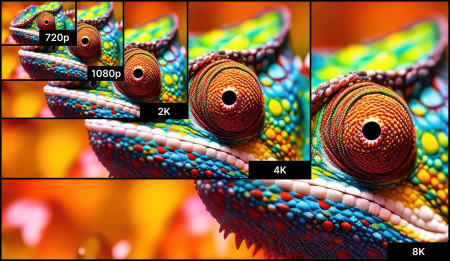
Progressive encoding stands as a champion of consistent visual quality and clarity. By displaying each frame in its entirety, progressive encoding ensures uniformity in image sharpness and detail.
Whether capturing fast-paced action or intricate visual elements, progressive encoding maintains the integrity of the visual experience. The smooth and seamless playback it offers has contributed to its prominence in the digital age.
Interlaced encoding’s distinctive transmission pattern introduces challenges to visual quality and clarity. As odd and even fields are displayed alternately, motion artifacts and reduced image sharpness can arise.
While interlaced encoding’s design aimed to counteract flickering on CRT displays, its compatibility with modern, progressive screens has diminished, often requiring deinterlacing to achieve optimal quality.
3. Progressive Vs Interlaced Video Encoding: Compatibility with Modern Displays

In progressive encoding, the alignment between progressive encoding and modern display technologies is apparent. Progressive encoding complements the capabilities of LCDs, OLEDs, and digital projectors by delivering complete frames that suit their inherent characteristics. This compatibility ensures a smooth and natural viewing experience that resonates with contemporary audiences.
Interlaced encoding‘s compatibility lies in its historical context and legacy devices. While it was tailored for CRT displays, its relevance has waned with the rise of modern, progressive displays. Adapting interlaced content for modern screens requires deinterlacing, which can introduce artifacts and impact image quality.
4. Progressive Vs Interlaced Video Encoding: Bandwidth Efficiency

Progressive encoding operates as a meticulous steward of bandwidth resources. This method artfully balances the compression of individual frames with the preservation of visual quality. The result? Reduced file sizes that enable efficient data transmission.
As frames are meticulously compressed while upholding their essence, loading times are significantly expedited. This efficiency culminates in an uninterrupted and fluid playback experience that captivates audiences. The marriage of optimized bandwidth usage and seamless playback stands as one of the cornerstones of progressive encoding’s appeal.
Interlaced encoding‘s foray into bandwidth efficiency is intertwined with its sequential transmission of fields. This approach, while functional within the realm of analog broadcasting, treads cautiously in the face of contemporary expectations.
The sequential transmission of fields served its purpose in a bygone era, accommodating the limitations of analog systems. However, as technology catapulted forward, modern progressive encoding techniques emerged as the pinnacle of bandwidth optimization.
Interlaced encoding’s legacy, while historically significant, pales in comparison to the efficiency and elegance exhibited by progressive encoding.
5. Progressive Vs Interlaced Video Encoding: Motion Handling

When it comes to motion handling, progressive encoding reigns supreme, delivering a level of finesse and precision that captures the essence of dynamic action. The heart of this advantage lies in its approach to displaying each frame as a complete entity.
As a result, progressive encoding affords a seamless and fluid portrayal of moving objects. Whether it’s the graceful choreography of a dance performance or the heart-pounding intensity of a high-speed chase, progressive encoding retains clarity and accuracy, preserving the integrity of each frame in the sequence.
This mastery over motion contributes to a heightened sense of engagement and immersion, elevating the viewer’s connection to the content.
Interlaced encoding ventures into the realm of motion handling with its rapid alternation of odd and even fields. This technique, designed to reduce flickering on early CRT displays, has inherent implications for motion portrayal. While it aims to mitigate motion blur, the process introduces challenges.
The alternating fields can result in motion artifacts, diminishing the visual clarity of moving objects. While interlaced encoding’s legacy of addressing flicker remains noteworthy, its effectiveness in handling motion, particularly on modern displays, is marred by artifacts that detract from the viewing experience.
6. Progressive Vs Interlaced Video Encoding: Deinterlacing

Interlaced video encoding, a technology rooted in the historical limitations of cathode ray tube (CRT) televisions, presents frames in an alternating manner. Each frame is split into two fields, with one field capturing odd-numbered lines and the other capturing even-numbered lines.
This technique aimed to mitigate flicker issues on early displays but introduced a unique challenge in the modern era: the need to reassemble these fields to present a cohesive image. This is where deinterlacing comes into play.
Deinterlacing, in the context of interlaced encoding, involves intricate algorithms and processing to reconstruct full progressive frames from the interlaced fields. This process is inherently complex due to the potential loss of temporal information and the challenge of creating smooth motion transitions.
Various algorithms have been developed to tackle deinterlacing, ranging from simple methods like “bob” deinterlacing (which duplicates lines to form frames) to more advanced techniques like “motion adaptive” deinterlacing (which analyzes the motion between fields to generate progressive frames).
On the other side of the spectrum lies progressive video encoding, a method that has gained prominence in the era of digital displays. Progressive encoding delivers frames sequentially, presenting a complete image in each frame without the interlaced split seen in traditional methods.
This eliminates the need for deinterlacing, simplifying the rendering process and reducing complexity. Consequently, progressive video offers improved visual quality and compatibility with modern devices.
The complexity associated with deinterlacing interlaced video is multi-faceted. First, it demands computational resources, making it a resource-intensive task for devices that lack the necessary processing power.
This can lead to performance bottlenecks and compromised user experiences, especially when dealing with high-definition content. Second, the deinterlacing process can introduce artifacts like jagged edges, combing, and motion stuttering if not executed meticulously. Thus, deinterlacing becomes a trade-off between computational demands and the preservation of visual fidelity.
In contrast, progressive video encoding significantly simplifies the playback process. Since frames are presented sequentially without the need for reassembly, devices can directly render frames, alleviating the computational burden.
The Future of Video Encoding
The landscape of video encoding is undergoing a transformative shift, driven by technological advancements, changing consumer preferences, and the need to deliver high-quality content seamlessly across an array of devices.
As we peer into the future, several key trends are poised to shape the way we encode, transmit, and consume video content.
1.The Rise of High-Resolution Progressive Video: Elevating Visual Experiences

High-resolution progressive video has emerged as a cornerstone of the future of video encoding. With the proliferation of ultra-high-definition (UHD) displays, such as 4K and 8K TVs, viewers are demanding content that harnesses the full potential of these screens. Progressive video, which presents complete frames in a sequential manner, aligns perfectly with the capabilities of modern displays.
This method eliminates the complexities associated with interlaced video, where fields need to be reassembled to form frames, ensuring a sharper and more consistent viewing experience.
The future holds even greater possibilities with advancements like 12K and beyond, pushing the boundaries of visual fidelity. These resolutions, accompanied by higher frame rates, will require encoding solutions that can handle vast amounts of data while retaining efficiency in transmission and decoding.
2. The Phasing Out of Interlaced Video Technologies: A Natural Evolution

Interlaced video, once a necessity to mitigate display limitations, is gradually being phased out in favor of progressive encoding. This shift is driven by a multitude of factors, including the dwindling use of CRT displays, the ubiquity of digital screens, and the inherent complexities and artifacts associated with deinterlacing interlaced content. As technology marches forward, interlaced video is becoming less compatible with the digital landscape, making its retirement a natural evolution.
While legacy content encoded in interlaced formats remains relevant, modern content production is embracing progressive techniques to ensure compatibility across a diverse range of devices. This transition allows for smoother distribution and playback, streamlining the viewing experience for audiences worldwide.
3. Advancements in Video Compression Techniques: Balancing Quality and Bandwidth

As the appetite for higher resolutions and richer content grows, so does the demand for efficient video compression techniques. Innovations in this realm are essential to strike a balance between preserving visual quality and minimizing bandwidth consumption. High-efficiency video coding (HEVC) and its successor, the versatile video coding (VVC), have made significant strides in this direction.
HEVC, also known as H.265, revolutionized video compression by achieving roughly a 50% reduction in bit rate compared to its predecessor, H.264. VVC takes this further with the potential to halve the bit rate of HEVC while maintaining equivalent quality. These advancements are critical for enabling the streaming of high-resolution content over limited internet connections, reducing buffering and enhancing accessibility.
However, it’s important to note that these compression technologies also come with computational demands during encoding and decoding. As we look to the future, optimizing hardware and software solutions to handle these requirements will be paramount.
The Bottom Line
In the grand narrative of video encoding’s future, the spotlight unmistakably falls on progressive video encoding. The seamless fusion of high-resolution visuals and compatibility with modern displays defines this path forward, propelling interlaced technologies to the annals of history. Amid this transformation, Muvi One stands as an emblematic solution that encapsulates the essence of this evolution.
Muvi One doesn’t merely adapt to the future; it pioneers it. This comprehensive platform empowers creators, businesses, and visionaries to forge their own branded OTT platforms without grappling with complex code. It’s a paradigm shift, enabling anyone to embark on their streaming journey effortlessly.
Furthermore, Muvi One amplifies this journey with an array of competitive solutions. A scalable CDN ensures smooth and reliable content delivery, while robust DRM safeguards the content’s integrity. SEO tools optimize discoverability, and audience engagement tools deepen viewer interaction.
A standout feature is the revolutionary progressive video encoding technology embedded within Muvi One. By slashing video encoding time by more than half, it not only saves precious resources but also enhances efficiency. The future is beckoning, and Muvi One stands as the bridge, ushering in the era of high-quality, progressive video experiences while revolutionizing the way we create, deliver, and engage with content.
Take a 14-day free trial today to get started.

FAQs
- What is progressive video encoding?
Progressive video encoding displays frames sequentially, enhancing smoothness by presenting complete images in each frame.
- What is interlaced video encoding?
Interlaced video encoding displays frames in two separate fields, odd and even lines, which combine to form a full frame.
- Which is better for modern displays?
Progressive encoding suits modern displays, as they inherently render full frames, eliminating interlacing artifacts.
- Why was interlaced encoding used originally?
Interlaced encoding was introduced due to technical limitations and broadcast standards of early CRT displays.
- What are the drawbacks of interlaced encoding?
Interlaced encoding brings flickering, jagged edges, and motion artifacts, hindering image quality and clarity.
- How does progressive encoding avoid artifacts?
Progressive encoding avoids artifacts by displaying complete frames, offering sharper visuals and improved motion representation.
- Can interlaced content be converted to progressive?
Yes, interlaced content can be converted to progressive, often enhancing its visual quality and compatibility with modern devices.
- Which video formats support progressive and interlaced encoding?
Video formats like MP4, AVI, and MKV support both progressive and interlaced encoding, accommodating various display preferences.
- Is interlaced encoding still used today?
While largely phased out, interlaced encoding still finds use in legacy systems, but it’s increasingly replaced by progressive methods.
- What’s the future of video encoding?
The future of video encoding lies in advanced compression techniques (HEVC, AV1), adaptive streaming, and 8K+ resolutions, catering to evolving consumer demands and cutting-edge displays.
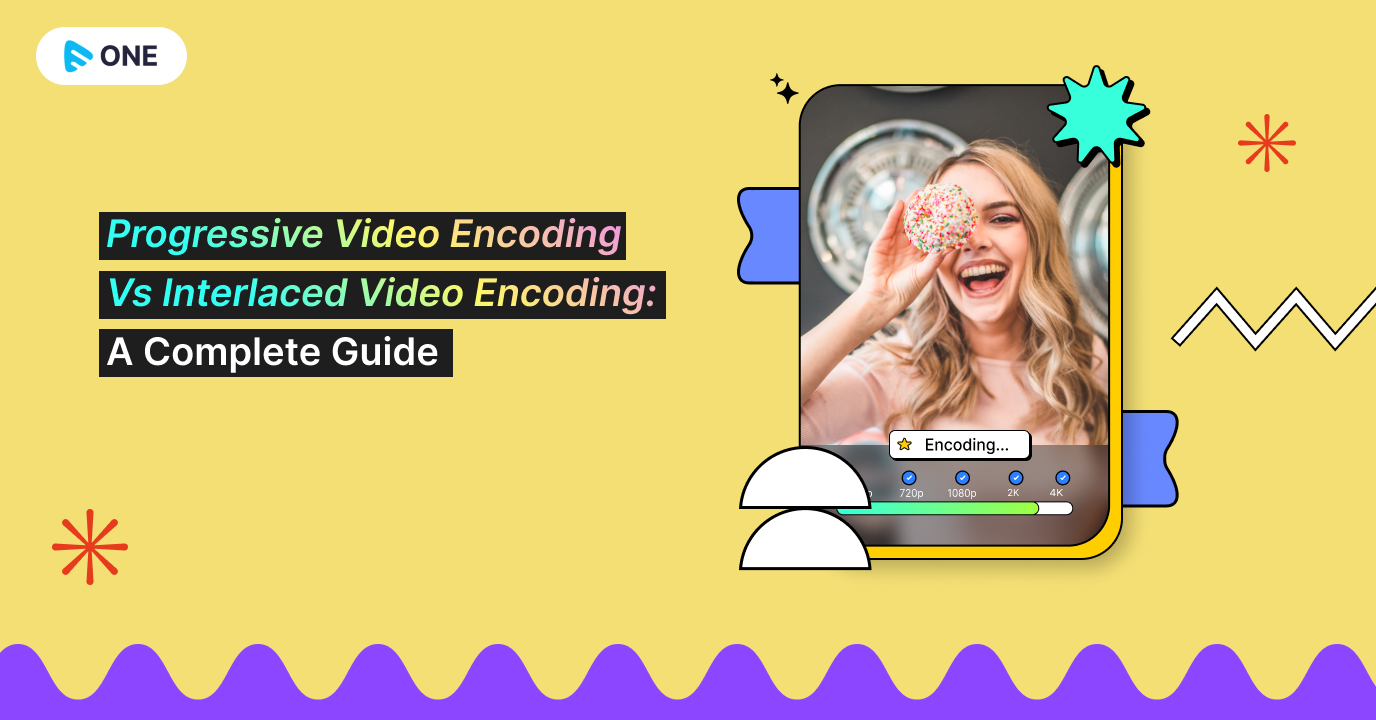























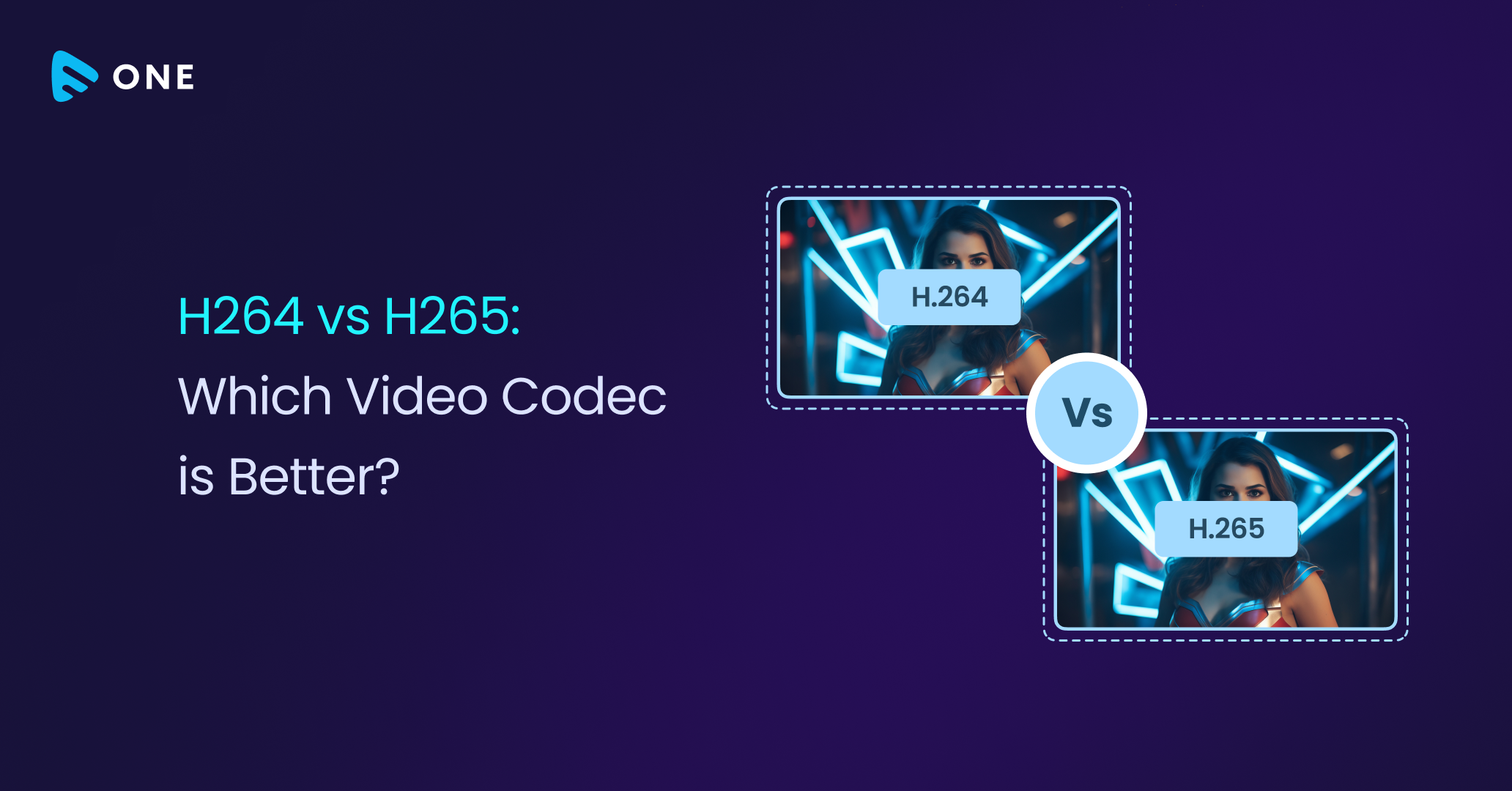
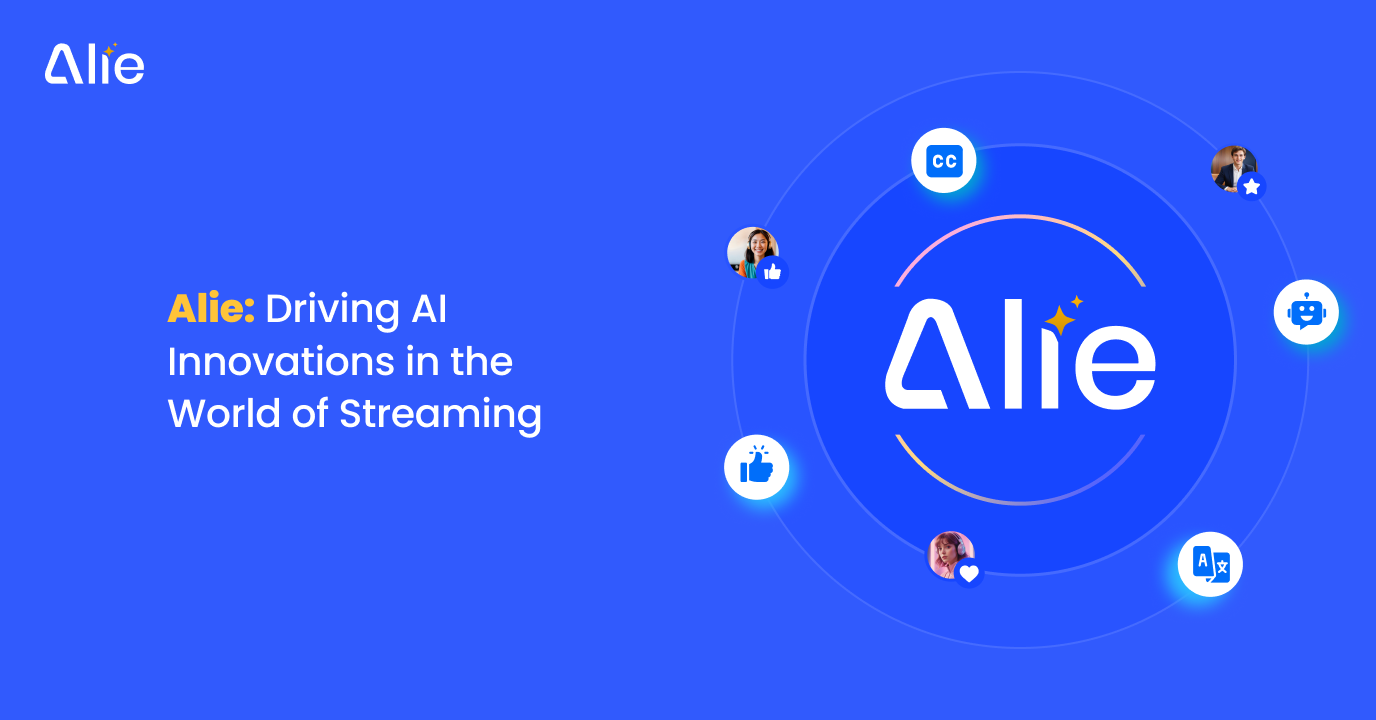



Add your comment